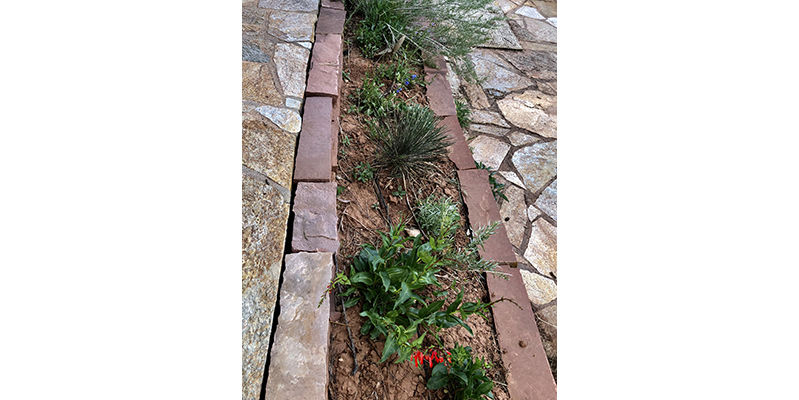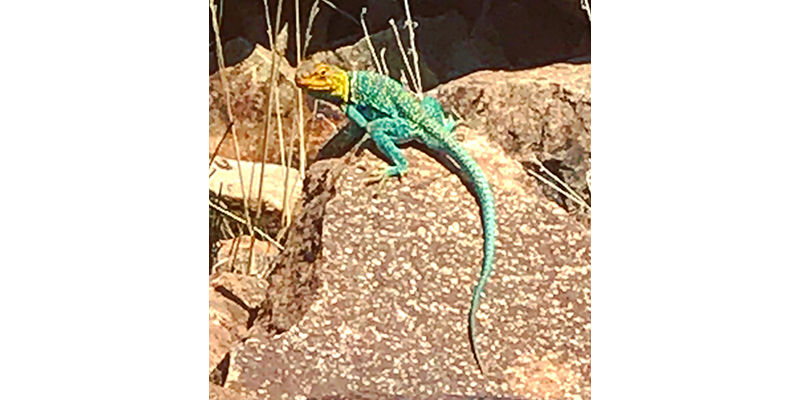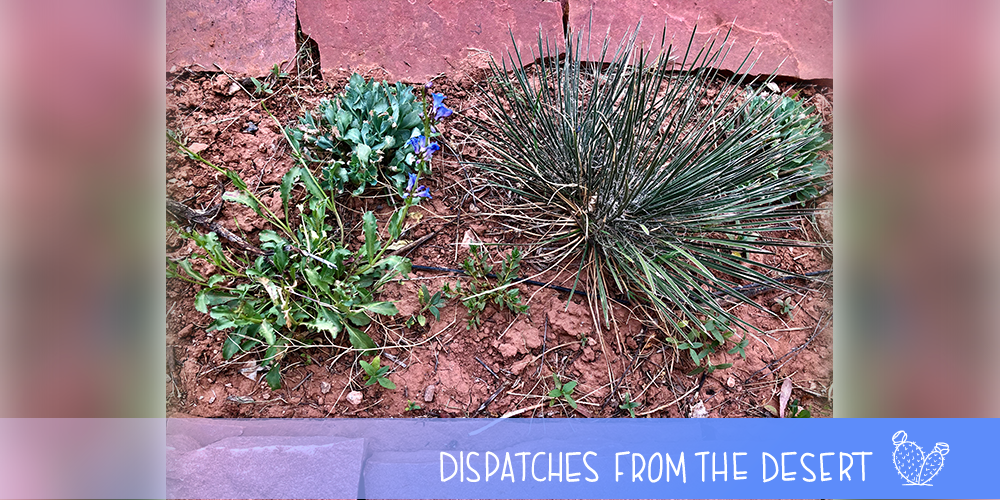26 April 2020
Castle Valley, Utah
ou can’t call me a gardener – I have too much respect for the wild chaos that emerges beyond our stone porch. But I have created a small slice of controlled domesticity in our semblance of a backyard in the desert. On hands and knees, it requires maybe ten minutes of my day to pull out insistent cheat grass that will turn hostile within days. This week it is green, next week it will be yellow, brittle, and mobile – its relentless seeds will become needles darning my socks, scratching my ankles or an invisible demon lodged in the ears of our dogs.

Soon red, blue, and pink species of penstemon will blossom and sway in the breezes like great floral instruments, with prickly pears showing off their yellow flowers, waxy to the touch. In the middle of this narrow garden, I transplanted a small yucca as the focal point bordered by native sumac and chamisa. My hope is that this year it blooms, growing a stalk to attract the elusive yucca moths that appear at night as white-robed priestesses who come to pollinate the yellow-white bell flowers, each one poised above the other, sentinels in the dark.
A black widow lives in a particular crack between the sandstone bricks. She comes out at dusk. I know where she lives because too often, my hand recoils when I accidently get tangled in her sticky and messy web. I respect her. I know the power and pain of her bite – Years ago, it took me several days to sleep through the aching hallucinations caused by another black widow’s venom.
Lizards love this place. Sagebrush lizards, desert spiny lizards, northern whiptails and the most flamboyant of all, collared lizards with their golden heads, black striped necklaces and turquoise beaded bodies dotted with red. I never take them for granted. In the twenty-two years we have lived here, they seem to be more of a rarity. I don’t know why. Drought? Climate? More development? Each visitation feels like a blessing.

I often see a five-foot bull snake slither around the cactus that instinctively stops my heart until I can see its tail is void of rattles. That is its ruse, you think it’s a rattlesnake, but it’s not. We give the snake a wide berth and a bow as biologists say one bull snake can eat as many as 1000 field mice in a season.
Ants are common as they travel back and forth from their hill maybe ten yards away. Once an Ecuadorian shaman came to the valley and instructed me to simply watch the ants as a spiritual practice. Sometimes, I do. Bumblebees, carpenter bees are regulars to this garden as are painted ladies, hoary commas, and checkered white butterflies. Regardless what is happening in our world from pandemics to world wars, life on this scale in the desert continues.
I like to water my garden in the morning. But mainly, I like to feel the early sun on my shoulders and listen to the meadowlarks and phoebes sing before I am fully awake. It is also where sentences appear.
Terry Tempest Williams
Mark your calendars for February 1, 2024! The Resiliency Center and the Center for Health Ethics, Arts, and Humanities are gearing up for the sixth Healthcare Stories event at Kingsbury Hall. This year's captivating theme, "Promise," invites healthcare professionals, patients, and community members to explore futures imagined, unexpected journeys, and transformative relationships.
University of Utah Black Cultural Center’s Meligha Garfield and Sara Cody share insights on celebrating Juneteenth respectfully and emphasize the importance of understanding its history to avoid misappropriation.
